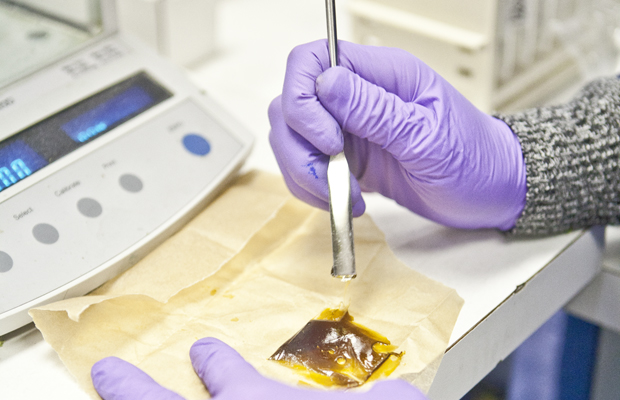
Industry Events
Conference Highlights Necessity of Rigorous Cannabis Testing
At this year’s Emerald Conference in San Francisco, over one hundred chemists, cultivators, dispensary operators and policy makers gathered together to discuss the ever-evolving field of cannabis testing. Attendees at the conference shared valuable insights on the current and future state of analytical testing in the flourishing marijuana industry.
There were no shortage of complex mathematical formulas scrawled on dry erase boards and offhand jokes were made by scientists including phrases like “GC x GC modulator operation.” But, for the layman, terms like “terpene testing” surfaced as well as the idea that deeper tests should be run for harmful pesticides and bacteria present in cannabis.
The event, produced by lab equipment supplier Emerald Scientific, sought to look at the “impacts and implications of testing accuracy,” which conference attendees unanimously agreed is essential from grower to dispensary to purchaser in order to support the great consumer demand for clean medicine.
The repeated message from speakers throughout the day was for rigorous and standardized quality assurance methods to certify that medicine is safe, clean and clearly-defined.
The conference was a pro-active approach on the part of lab and accreditation attendees to set in motion a system to verify proficiency and technical competence in the field. It also acted as a great opportunity for leaders in the cannabis industry to develop rules and regulations ahead of state and federal bodies who may have experience with testing food and pharmaceuticals, but lack the experience necessary when dealing with the testing of cannabis.
Representatives were present from the American National Standards Institute(ANSI) – a private, non-profit organization that has overseen the development of standards for “products, services, processes, systems, and personnel in the U.S” since 1918; and the International Organization for Standardization (ISO), a similar body that covers industries spanning from “technology to food safety to agriculture and healthcare.”
Scientists at the conference gave anecdotal examples of troubling discoveries in some sample cases, such as finding E.coli and pseudomonas highly present in bubble hash and the occurrence of one nefarious discovery of “cholinesterase” – also present in snake venom – showing up in a cannabis sample testing positive for pesticides.
Speakers also broached the topic of developing reasonable cost structures in the industry, particularly for dispensaries that regularly allocate large sums of their overhead for product testing.
Robert Martin, cofounder of cannabis testing lab CW Analytical in Oakland, Calif. – whose client list includes Bhang Cannabis Chocolates and gluten-free Stone Edibles – noted increased financial concerns for dispensaries. During his tenure working at Dreyers Ice Cream in the 1990s, Martin says the average price charged for quality assurance testing of a product was about $50,000 per one million units. With regards to testing methods required for cannabis, he says a relatively small dispensary could see analytical testing charges in excess of $20,000 per one-month period.
“That’s ridiculous,” says Martin. “[Labs] really need to get to a point where testing costs for producers and retailers are like just another light bill.”
Scientists, though optimistic about developing standards and proficiency testing in the cannabis industry, were realistic about this brave new world and the challenges they face.
“No journal articles exist for extracting compounds from gummy bears,” says lab director Jill Brzezicki, who has a background in chemistry and toxicology and works at marijuana testing facility CMT Laboratories in Colorado. “We’re in the middle of developing these processes – we are creating this on the fly.”
Would you want to get your cannabis tested in a lab? Tell why or why not in the comments.























